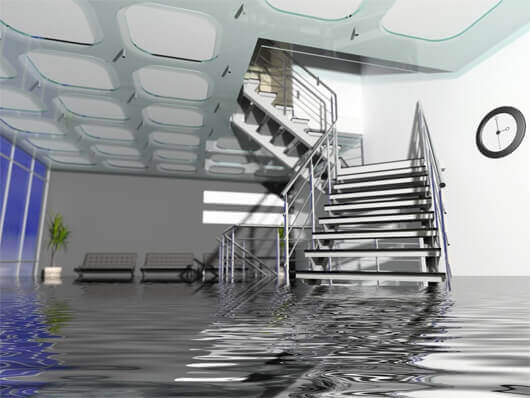
Dealing with a flood in your home can be overwhelming, but knowing the right steps to take can make all the difference in minimizing damage and ensuring safety. Whether caused by heavy rain, burst pipes, or other unforeseen events, quick and effective action is essential.
So, we’ll walk you through easy steps to handle a flood in your home, from immediate safety measures to protecting your belongings and starting the cleanup process. By following these steps, you can reduce the impact of flooding and begin restoring your home as quickly and safely as possible.
Immediate Actions to Take When a Flood Occurs
When a flood happens, the first thing to do is to ensure everyone’s safety. If water is getting into your home, move to higher ground immediately. Places like an upstairs room or an attic can be safe spots. Don’t touch any electrical appliances if you are standing in water. If you can safely reach the main electrical panel, turn off the electricity to prevent shocks and further damage.
Next, contact emergency services if the flooding is severe. They can help you get out of a dangerous situation and provide necessary assistance. Also, notify your insurance company about the flood as soon as possible. They will guide you on documenting the damage for a future claim.
Gather essential items like medications, important documents, and valuables, and keep them in a waterproof container. Make sure your pets are also safe and have everything they need. These simple steps can make a big difference in a chaotic situation.
Safely Removing Water from Your Home
Once it’s safe, the next step is to remove as much water as you can. The faster you do this, the less damage your home will suffer. Start by using a wet/dry vacuum to suck up water in small areas. In larger spaces, push out water with a floor squeegee or a mop. Be careful not to overexert yourself; flood cleanup can be tiring work.
After getting rid of standing water, you can use fans and dehumidifiers to help dry out the space. Place the fans in windows to blow out moist air. Dehumidifiers can pull moisture out of the air, speeding up the drying process. If you don’t have these machines, consider renting them.
Keep an eye on the weather. If more rain is expected, ensure your home is as dry and protected as possible. Also, keep children and pets away from the affected area until it is safe and clean. Removing water quickly and safely is essential to reducing long-term damage and preventing mold growth.
Drying and Cleaning Flooded Areas
After removing the water, you need to focus on drying and cleaning the affected areas to prevent mold and mildew. Start by opening windows and doors to let fresh air in. Fans can help circulate air and dry out wet areas faster. Place large fans in windows to blow moist air outside. This will speed up the drying process.
Once the area is dry, it’s time to clean. Use a mixture of water and dish soap to scrub surfaces that came in contact with floodwater. Pay special attention to walls, floors, and any furniture that can be saved. For deeper cleaning, use a mix of water and bleach. This will disinfect the area and kill any bacteria that may have come in with the floodwater.
Remember to wear gloves and a mask for protection while cleaning. Dispose of any items that cannot be cleaned, such as carpets, rugs, and upholstered furniture. These items can harbor mold and bacteria, making the environment unsafe. Thorough cleaning ensures your home is safe and healthy after a flood.
Preventing Future Flood Damage
Preventing future floods is crucial to avoid going through the same trouble again. Begin by checking your home’s drainage system. Clean gutters and downspouts regularly to ensure water can flow away from your home. Poor drainage can cause water to pool around your foundation, leading to leaks.
Elevate your electrical appliances and important items. Keep them on shelves or elevated platforms to protect them from future floodwaters. Consider installing flood sensors to get early warnings if water starts to rise in your home. These sensors can help you act quickly and prevent extensive damage.
You may also want to look into making changes around your home. Landscaping with slopes can help direct water away from your house. Waterproofing your basement and installing sump pumps can also reduce the risk of flooding. By taking these steps, you can protect your home and belongings from future floods.
Easy Flood Management Tips for Homeowners
Handling a flood in your home involves quick action and thorough cleaning to minimize damage and keep your family safe. Following the right steps can make a big difference when dealing with floodwater. From ensuring safety during the flood to drying, cleaning, and taking preventive measures, each action plays a vital role in managing a flood effectively.
Floods can be devastating, but being prepared and knowing what to do can help you recover faster. Regular maintenance and smart planning can prevent future flood damage and ease the stress if a flood occurs again.
If you need professional help with water damage in Ventura, contact us at Restoration Masters. We have the expertise to handle all aspects of flood restoration, ensuring your home is safe and secure. Call us today for an assessment and let us help you get your home back to normal!





